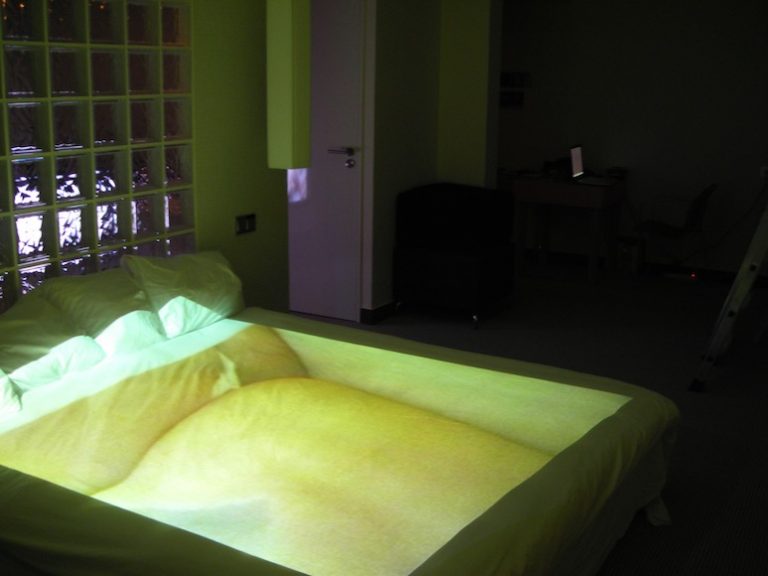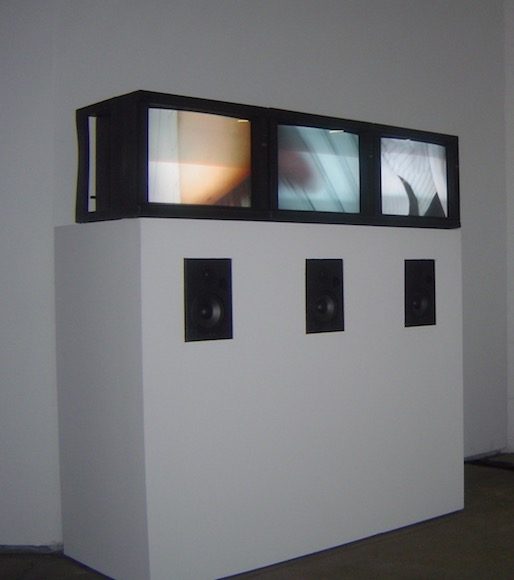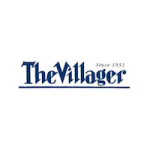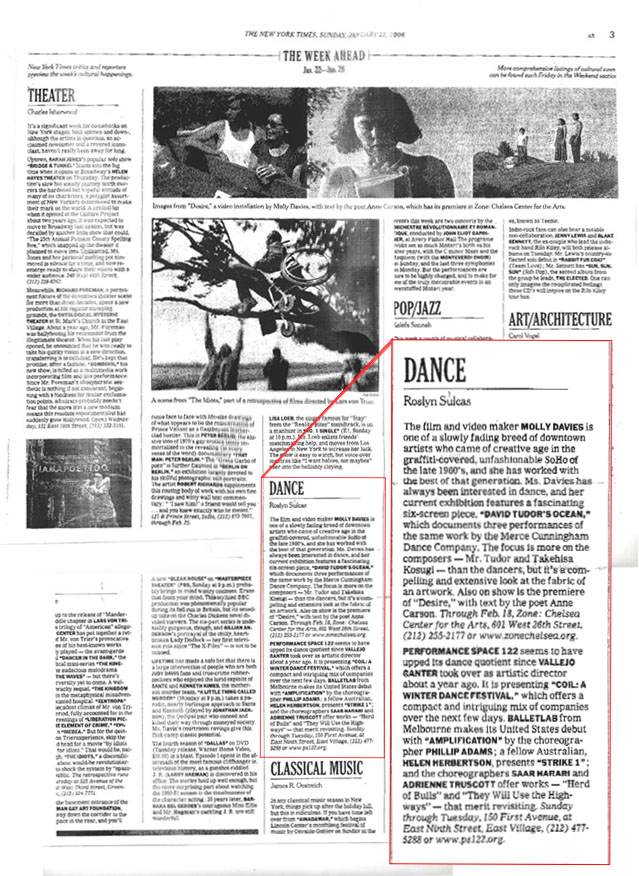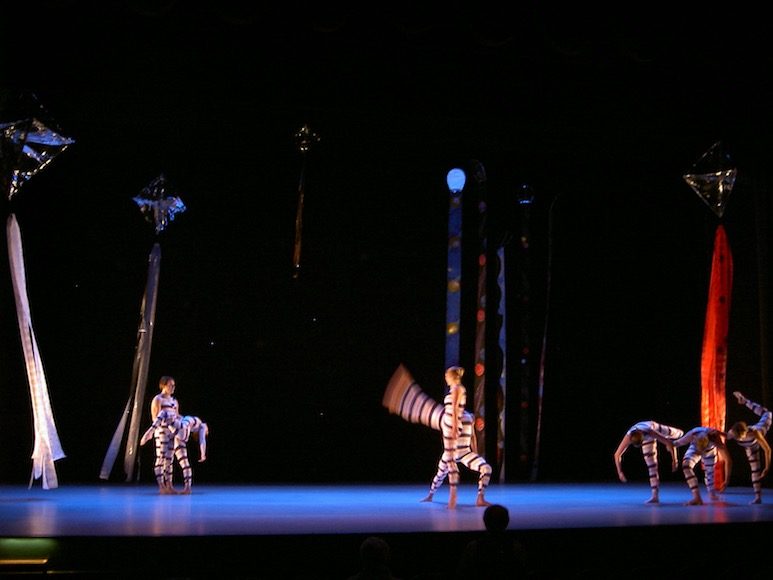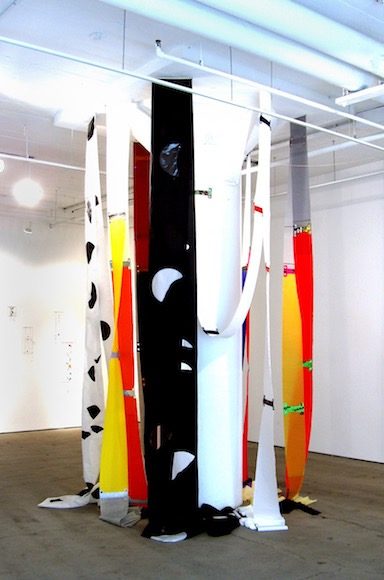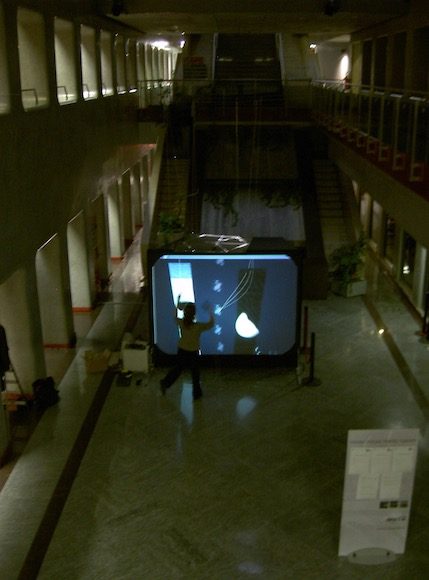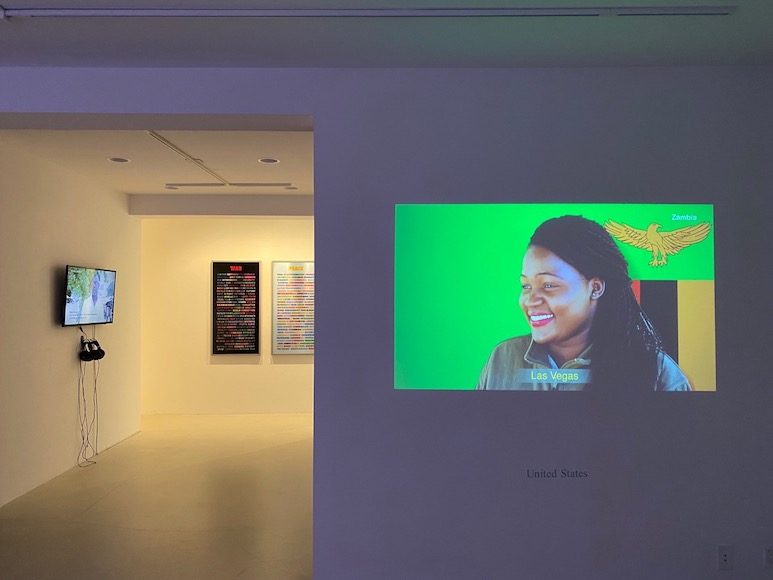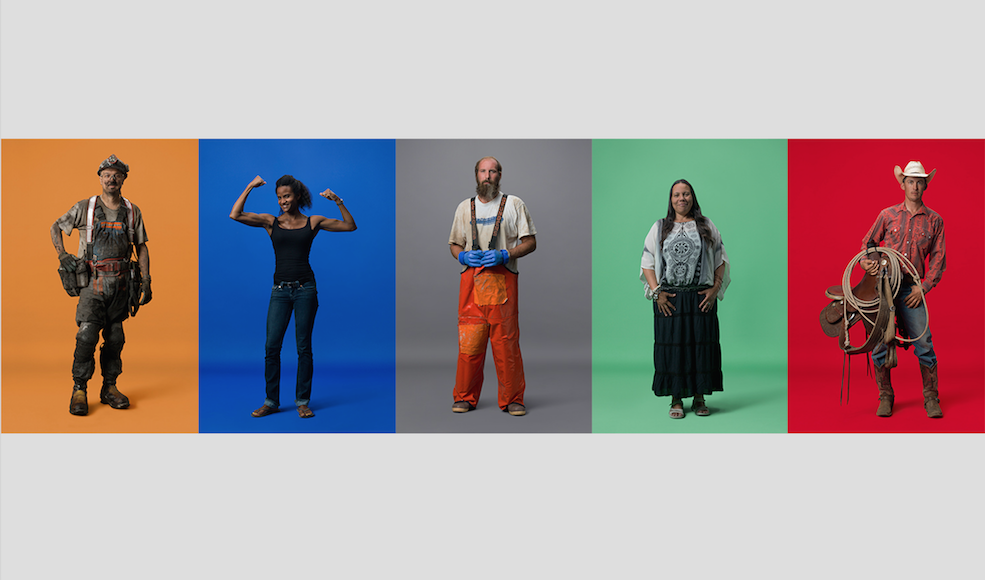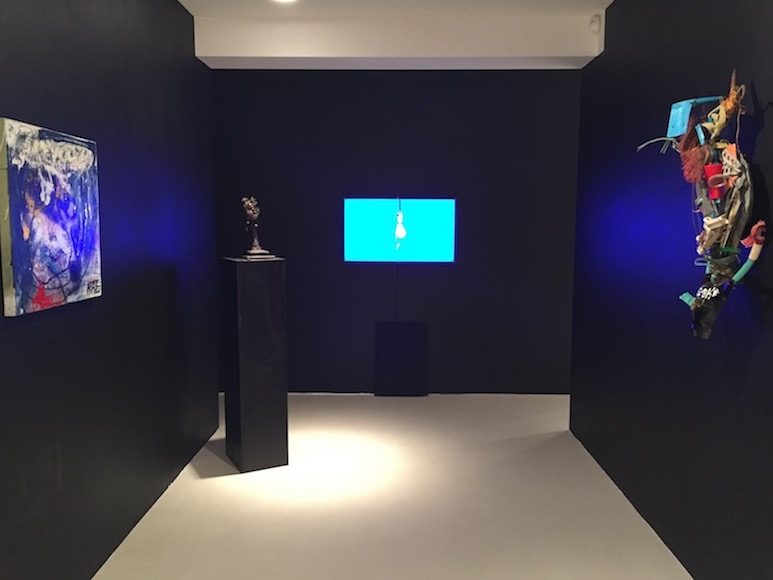The New York Times includes “Molly Davies” in The Week Ahead
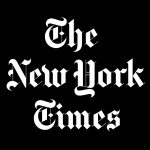
By Roslyn Sulcas
The film and video maker MOLLY DAVIES is one of a slowly fading breed of downtown artists who came of creative age in the graffiti-covered, unfashionable SoHo of the late 1960’s, and she has worked with the best of that generation. Ms. Davies has always been interested in dance, and her current exhibition features a fascinating six-screen piece, “DAVID TUDOR’S OCEAN,” which documents three performances of the same work by the Merce Cunningham Dance Company. The focus is more on the composers – Mr. Tudor and Takehisa Kosugi – than the dancers, but it’s a compelling and extensive look at the fabric of an artwork. Also on show is the premiere of “Desire,” with text by the poet Anne Carson. Through Feb. 18, Zone: Chelsea Center for the Arts, 601 West 26th Street, (212) 255-2177.
https://www.nytimes.com/2006/01/22/arts/the-week-ahead-jan-22-jan-28.html
Related:
Categories: news
Tags: Molly Davies
The Village Voice reviews “Jackie Matisse: New Art Volant”

June 15th - 21st, 2005
Air Born
Jackie Matisse
by R.C. Baker
Jackie Matisse
Zone Chelsea
601 West 26th Street
Through June 24
Henri was Jackie Matisse’s granddad; she helped her stepfather, Marcel Duchamp, with the construction of his “portable museums.” Some might have wilted under such a legacy. Instead, this septuagenarian artist has combined the bold compositions and formal revolutions of her heritage, leavened them with Arte Povera, and blazed her own trail on gallery walls and video screens, underwater, and across the sky.
A selection of Matisse’s kite art—vibrant cloth sails and rainbow-saturated crepe paper tails—anchors a body of work that has a strong physical presence and a radiant spirit. Using rigid piano wire, Matisse has constructed skeletal boxes containing street flotsam—bits of foil, wood, plastic toys, newsprint, feathers—suspended by strands of human hair from “many different people.” (The framework for Magic Hair No. 1, 1968, is meant to evoke a Paris cobblestone, and the artist confides, “the hair is a very small one,” implying that some were making love, not war, during the May revolts.) Elsewhere, tiny streamers swirl in bottles of water (magnets propel their weightless, chromatic dance), and virtual-reality kites vie for prominence in a pixel sky. Sweet yet determined, this work exhibits no fear of flying.
Related:
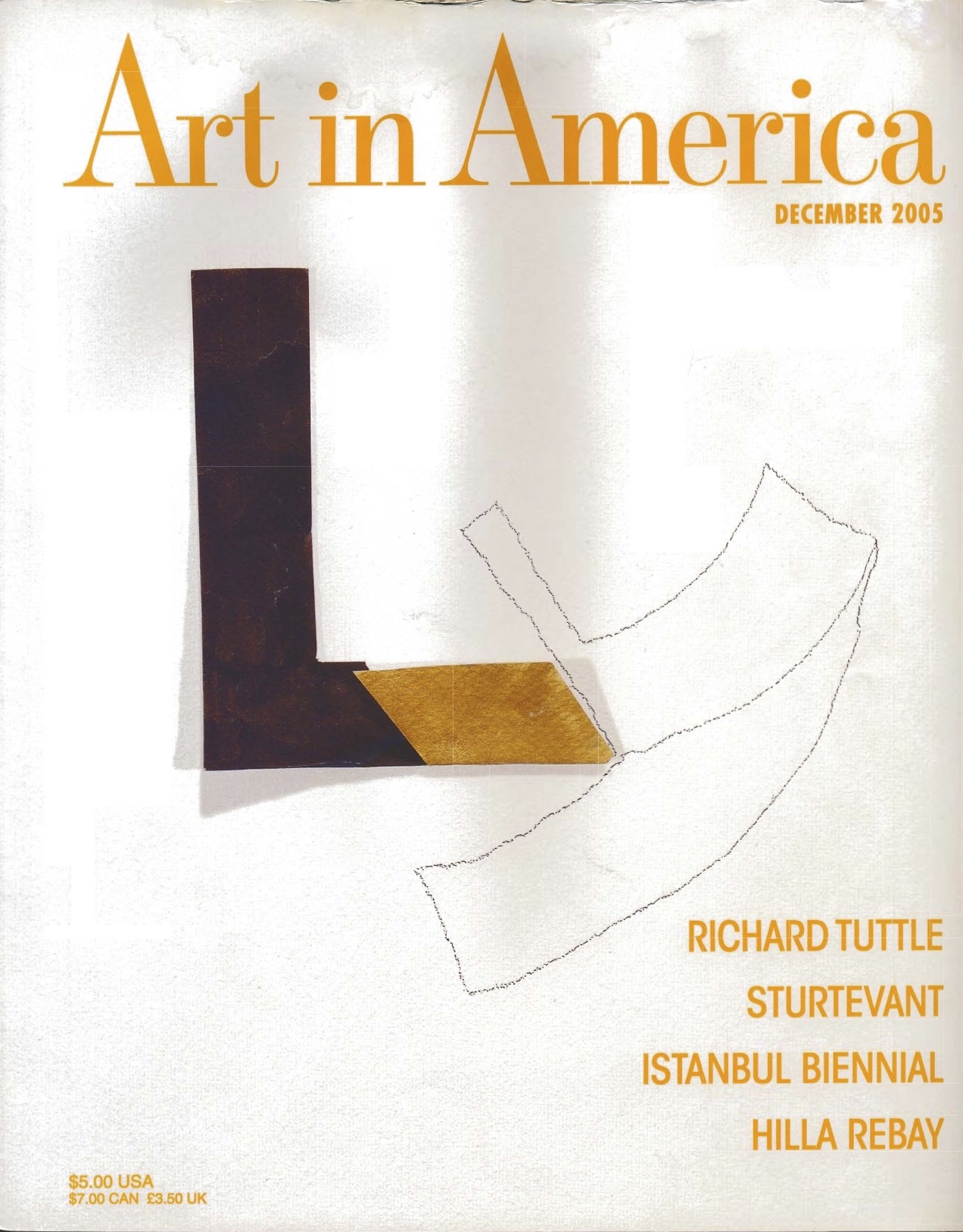
“Airborne Abstraction”, ART IN AMERICA reviews Jackie Matisse’s exhibition
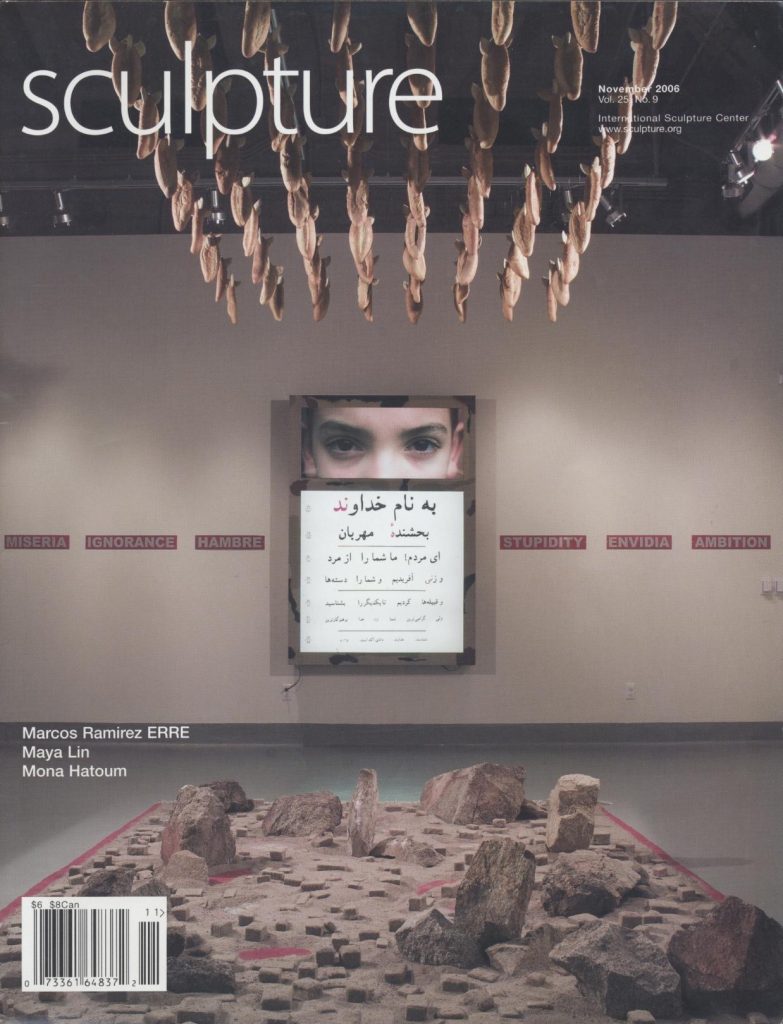
SCULPTURE MAGAZINE review on Jackie Matisse
Categories: news
Tags: Jackie Matisse
SCULPTURE MAGAZINE review on Jackie Matisse
Novbember 2006, Vol.25, P34 - 39, by Howard Risatti

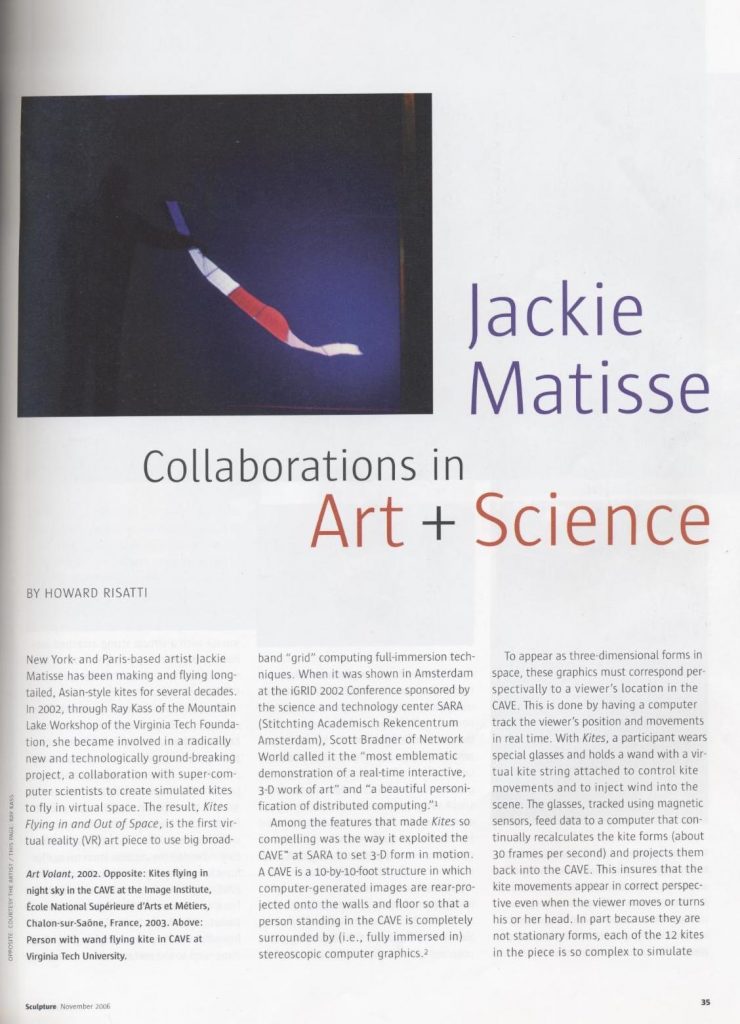
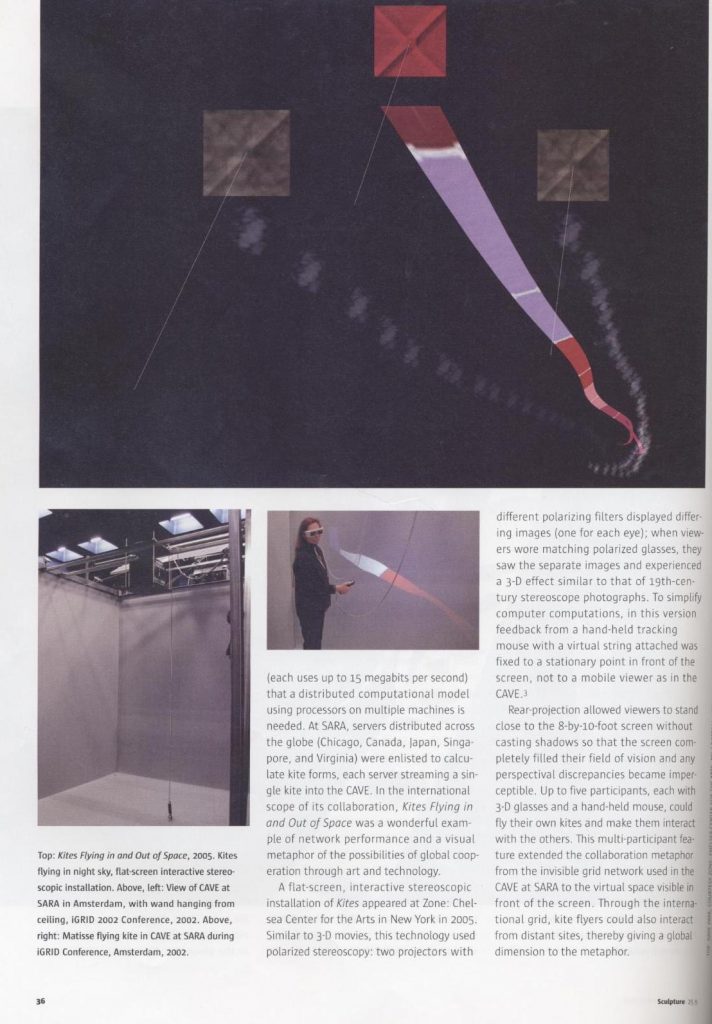
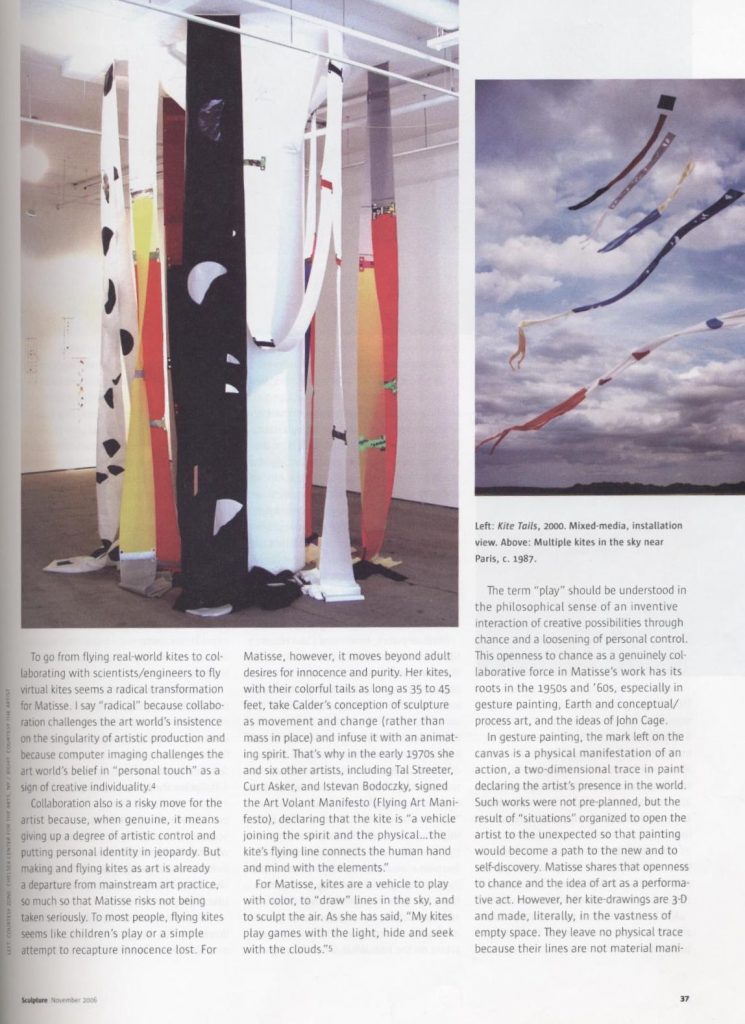
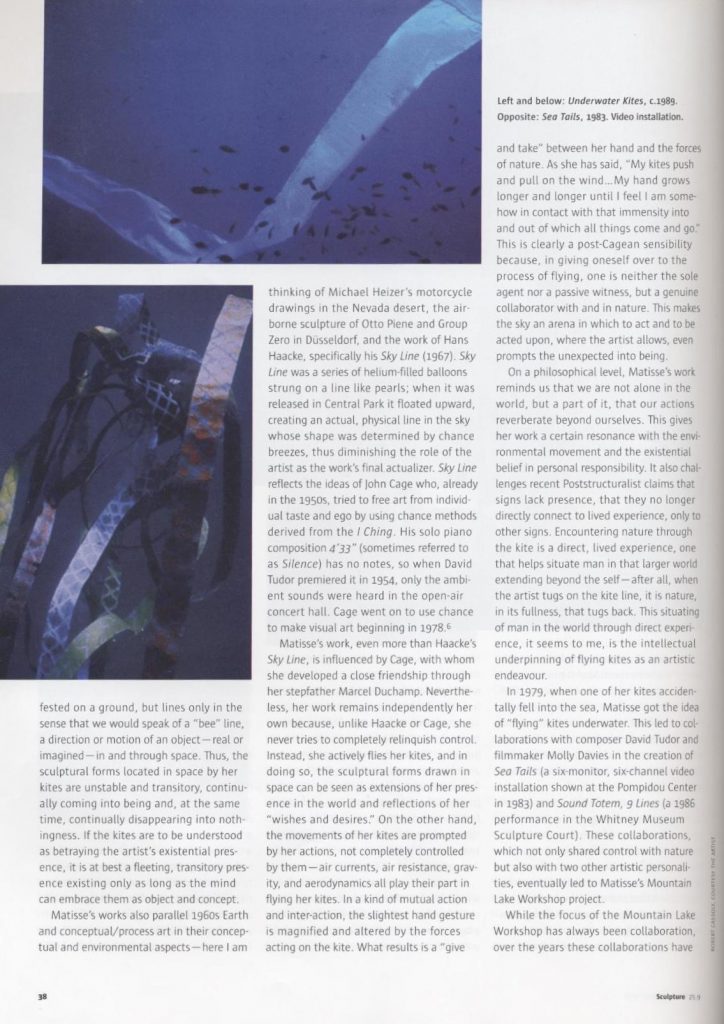
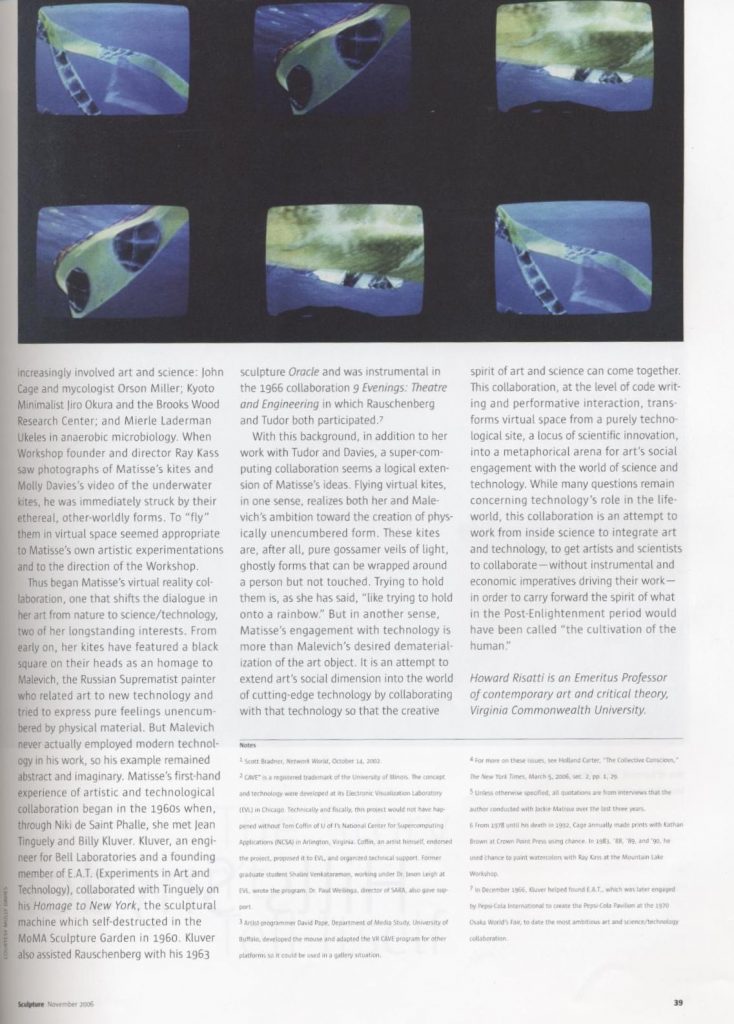
“Jackie Matisse: Collaborations in Art and Science”
New York and Paris based artist Jackie Matisse has been making and flying long-tailed, Asian-style kites for several decades. In 2002, through Ray Kass of the Mountain Lake Workshop of the Virginia Tech Foundation, she became involved in a radically new and technologically ground-breaking project, a collaboration with super-computer scientists to create simulated kites to fly in virtual space. The result, Kites Flying in and Out of Space, is the first virtual reality (VR) art piece ever created to use big broadband “grid” computing full immersion techniques. When it was shown in Amsterdam at the iGRID 2002 Conference sponsored by science and technology center SARA (Stitchting Academisch Rekencentrum Amsterdam), Scott Bradner of Network World called it the “most emblematic demonstration of a real-time interactive, 3-D work of art” and “a beautiful personification of distributed computing.”1
Among the features that made Kitesso compelling was the way it exploited the CAVE™ at SARA to set 3-dimensional form in motion. A CAVE is a 10′ x 10′ structure in which computer-generated images are rear projected onto walls and floor so that a person standing in the CAVE is completely surrounded by (i.e, fully immersed in) stereoscopic computer graphics.2 To appear as three-dimensional forms in space, these graphics must correspond perspectivally to a viewer’s location in the CAVE. This is done by having a computer track the viewer’s position and movements in real time. With Kitesa participant wears special glasses and holds a wand with a virtual kite string attached to control kite movements and to inject wind into the scene. The glasses, tracked using magnetic sensors, feed data to a computer that continually recalculates the kite forms (∼30 frames/second) and projects them back into the CAVE. This insures kite movements appear perspectively correct even when the viewer moves or turns his or her head. In part because they are not stationary forms, each of the 12 kites in the piece is so complex to simulate (each utilizes up to 15 megabits/second) that a distributed computational model using processors on multiple machines is needed. At SARA servers distributed across the globe (Chicago, Canada, Japan, Singapore, and Virginia) were enlisted to calculate kite forms, each server streaming a single kite into the CAVE. In the international scope of its collaboration Kites Flying in and Out of Spacewas a wonderful example of network performance and a visual metaphor of the possibilities of global cooperation through art and technology.
A version of Kitesshown in 2005 at Zone: Chelsea Center for the Arts in New York was a flat-screen, interactive stereoscopic installation. Similar to 3-D movies, this technology uses polarized stereoscopy: two projectors with different polarizing filters display differing images (one for each eye); when viewers wear matching polarized glasses they see the separate images and experience a 3-D effect similar to that of 19th-century stereoscope photographs. To simplify computer computations, in this version feed-back from a hand-held tracking mouse with a virtual string attached was fixed to a stationary point in front of the screen, not to a mobile viewer as in the CAVE.3 Rear-projection allowed viewers to stand close to the 8′ x 10′ screen without casting shadows so the screen completely filled their field of vision and any perspectival discrepancies became imperceptible. Up to five participants with 3-D glasses and a hand-held mouse could each fly their own kite and interact with each others kites. This multi-participant feature extended the collaboration metaphor from the invisible grid network used in the CAVE at SARA to the virtual space visible in front of the screen. Through the international grid kite flyers also could have interacted from distant sites thereby giving a global dimension to the metaphor.
To go from flying real-world kites to collaborating with scientist/engineers to fly virtual kites seems a radical transformation for Jackie Matisse of both means and ends. I say radical because collaboration challenges the art world’s insistence on the singularity of artistic production and because computer imaging challenges the art world’s belief in “personal touch” as a sign of creative individuality.4 Collaboration also is a risky move for the artist as well because, when genuine, it means giving up a degree of artistic control and putting personal identity in jeopardy. But, making and flying kites as art is already a departure from mainstream art practice, so much so that the artist risks not being taken seriously. To most people flying kites seems akin to children’s play or simply an attempt to recapture innocence lost. For Jackie Matisse, however, it moves beyond simple adult desires for innocence and purity. Her kites, with their colorful tails as long as 35 to 45 feet, take Alexander Calder’s conception of sculpture as movement and change (rather than mass in place) and infuse it with an animating spirit. That’s why in the early 1970s she and six other artists including Tal Streeter, Curt Asker, and Istevan Bodoczky signed the Art Volant Manifesto (Flying Art Manifesto) declaring that the kite is “a vehicle joining the spirit and the physical…, the kite’s flying line connects the human hand and mind with the elements.”
For Jackie Matisse, kites are a vehicle to play with color, to “draw” lines in the sky and to sculpt the air. As she has said, “my kites play games with the light, hide and seek with the clouds.”5 The term “play,” however, should be understood more in the philosophical sense of an inventive interaction of creative possibilities through chance and a loosening of personal control. This openness to chance as a genuinely collaborative force in her work has its roots in the1950s and 60s, especially in Gesture painting, Earth and Conceptual/Process art, and the ideas of John Cage.
In Gesture painting the mark left on the canvas is a physical manifestation of an action, a two-dimensional trace in paint declaring the artist’s presence in the world. Such works were not pre-planned, but the result of “situations” organized to open the artist to the unexpected so painting would become a path to the new and to self-discovery. Jackie Matisse shares with Gesture painters their openness to chance and the idea of art as a performative act. However, her kite-drawings are 3-dimensional and made, literally, in the vastness of empty space. They leave no physical trace because their lines are not material manifested on a ground, but lines only in the sense in which we would speak of a “bee” line, a direction or motion of an object–real or imagined–in and through space. Thus, the sculptural forms her kites locate in space are unstable and transitory, continually coming into being and, at the same time, continually disappearing into nothingness. If they are to be understood as betraying the artist’s existential presence, it is at best a fleeting, transitory presence existing only as long as the mind can embrace them as object and concept.
In their conceptual and environmental aspects her works also parallel 1960s Earth and Conceptual /Process Art–here I am thinking of Michael Heizer’s motorcycle drawings in the Nevada desert, the airborne sculpture of Otto Piene and Group Zero in Düsseldorf, and the work of Hans Haacke, specifically his 1967 Sky Line. Sky Linewas a series of helium-filled balloons strung on a line like pearls; when it was released in Central Park it floated upwards creating an actual, physical line in the sky whose shape was determined by chance by the breeze, thus diminishing the role of the artist in the work’s final actualization. In doing so Sky Line reflects the ideas of John Cage who, already in the 1950s, tried to free art from individual taste and ego by using chance methods derived from the I Chingto compose music; his solo piano composition 4’33”(sometimes referred to as Silence) has no notes so when David Tudor premiered it in 1954, only the ambient sounds of nature were heard in the open-air concert hall. Cage went on to use chance to make visual art beginning in 1978.6
Jackie Matisse’s work, even more than Haacke’s Sky Line, is influenced by Cage with whom she developed a close friendship through her step-father Marcel Duchamp. Nevertheless, her work remains independently her own because, unlike Haacke or Cage, she never tries to completely relinquish control. Instead, she actively flies her kites and in doing so the sculptural forms drawn in space can be seen as extensions of her presence in the world and reflections of her “wishes and desires.” On the other hand, the movements of her kites are only prompted by her actions, not completely controlled by them–air currents, air resistance, gravity, aerodynamics all play their part in flying her kites with her. In a kind of mutual action and inter-action, the slightest of hand gestures are magnified, but also altered by the forces of nature acting upon the kite. What results is a “give and take” between her hand and the forces of nature. As she has said,
my kites push and pull on the wind….My hand grows longer and longer until I feel I am somehow in contact with that immensity into and out of which all things come and go.
This is clearly a post-Cagean sensibility because, in giving oneself over to the process of flying, one is neither the sole agent nor a passive witness, but a genuine collaborator with and in nature. This makes the sky an arena in which to both act and to be acted upon, not only to allow, but to prompt the un-expected into being.
On a philosophical level Jackie Matisse’s art is a reminder that we are not alone in the world, but a part of it, that our actions reverberate beyond ourselves. This gives her work a certain resonance with the environmental movement and the existential belief in personal responsibility. It also challenges recent Post Structuralist claims that signs lack presence, that they no longer directly connect to lived experience, only to other signs. Encountering nature through the kite is a direct, lived experience, one that helps situate man in that larger world extending beyond the self–after all, when the artist tugs on the kite line, it is nature, in its fullness, that tugs back. This situating of man in the world through direct experience, it seems to me, is the intellectual underpinning of flying kites as an artistic endeavor.
In 1979 when one of her kites accidently fell into the sea, Jackie Matisse got the idea of “flying” kites underwater. This led to collaborations with composer David Tudor and filmmaker Molly Davies in the creation of Sea Tails(a six-monitor, six-channel video installation shown at the Pompidou Center in 1983) and Sound Totem, 9 Lines(a 1986 performance in the Whitney Museum Sculpture Court). These collaborations, which were radically different because now she was not only sharing control with nature but with two other artistic personalities, eventually led to her Mountain Lake Workshop project.
While focus of the Mountain Lake Workshop has always been collaboration, over the years these collaborations have increasingly involved art and science including John Cage and mycologist Orson Miller; Kyoto minimalist Jiro Okura and the Brooks Wood Research Center; and NYC Department of Sanitation “artist-in-residence” Mierle Laderman Ukeles in anaerobic microbiology. When Workshop founder and director Ray Kass saw photographs of Jackie Matisse’s kites and Molly Davies’video of her underwater kites, he was immediately struck by their ethereal, other worldly forms. To “fly” them in virtual space seemed appropriate to her own artistic experimentations and to the direction the Workshop had been going.
Thus began Jackie Matisse’s virtual reality collaboration, one which shifts the dialogue in her art from nature to science/technology, two of her long-standing interests. From early on her kites have featured a black square on their heads as a homage to Malevich, the Russian Suprematist painter who related art to new technology and tried to express pure feelings unencumbered by physical material. But Malevich never actually employed modern technology in his work so his example remained abstract and imaginary. Her first-hand experience of artistic and technological collaboration began in the 1960s when, through Niki de Saint Phalle, she met Jean Tinguely and Billy Kluver. Kluver, an engineer for Bell Laboratories and a founding member of E. A. T. (Experiments in Art and Technology), collaborated with Tinguely on his Homage to New York, that animated sculptural machine which self-destructed in the MoMA Sculpture Garden in 1960. Kluver also assisted Rauschenberg with his 1963 sculpture Oracleand was instrumental in the 1966 collaboration9 Evenings: Theatre and Engineering in which Rauschenberg and Tudor both participated.7
With this background plus her work with Tudor and Davies, a super-computing collaboration seems a logical extension of her ideas. Flying virtual kites, in one sense, realized both her and Malevich’s ambitions towards creation of physically unencumbered form; they are, after all, pure gossamer veils of light, ghostly forms that can be wrapped around a person but cannot be touched. Trying to hold them is, as she has said, “like trying to hold onto a rainbow.” But in another sense, her engagement with technology is more than a dematerialization of the art object as Malevich wished. It is an attempt to extend art’s social dimension into the world of cutting-edge technology by collaborating with that technology so the creative spirit of art and science can come together. This collaboration, at the level of code writing and performative interaction, transforms virtual space from a purely technological site, a locus of scientific innovation, into a metaphorical arena for art’s social engagement with the world of science and technology. While many questions remain concerning technology’s role in the life-world, this collaboration is an attempt to work from inside science to integrate art and technology, to get artists and scientists to collaborate–without instrumental and economic imperatives driving their work–in order to carry forward the spirit of what in the Post Enlightenment period would have been called “the cultivation of the human.”
1Scott Bradner, Network World (14 October 2002).
2CAVE™ is a registered trademark of the University of Illinois where the concept and technology were developed at its Electronic Visualization Laboratory (EVL) in Chicago. Technically and fiscally, this project would not have happened without Tom Coffin of the U of I’s National Center for Supercomputing Applications (NCSA) in Arlington, VA. Coffin, an artist himself, endorsed the project, proposed it to EVL, and organized technical support. Former graduate student Shalini Venkataraman, working under Dr. Jason Leigh at EVL, wrote the program. Dr. Paul Weilinga, Director of SARA, also gave support.
3Artist-programer David Pape, Department of Media Study, University of Buffalo, developed the mouse and adapted the VR CAVE program for other platforms so it could be used in a gallery situation.
4For more on these issues see Holland Carter, “The Collective Conscious,” The New York Times (5 March 2006), sec. 2, pp. 1 & 29.
5Unless otherwise specified, all quotes are from interviews the author conducted with the artist over the last three years.
6From 1978 until his death in 1992, Cage annually made prints with Kathan Brown at Crown Point Press using chance; in 1983, 88, 89, and 90 he used chance to paint watercolors with Ray Kass at the Mountain Lake Workshop.
7In December of 1966 Kluver helped found E. A. T. which later was engaged by Pepsi-Cola International to create the Pepsi Cola Pavilion at the 1970 Osaka World’s Fair, to date the most ambitious art and science/technology collaboration.

“Airborne Abstraction”, ART IN AMERICA reviews Jackie Matisse’s exhibition

SCULPTURE MAGAZINE review on Jackie Matisse
Categories: news
Tags: Jackie Matisse
“Airborne Abstraction”, ART IN AMERICA reviews Jackie Matisse’s exhibition
December 2005, by Jill Johnston

Page 1
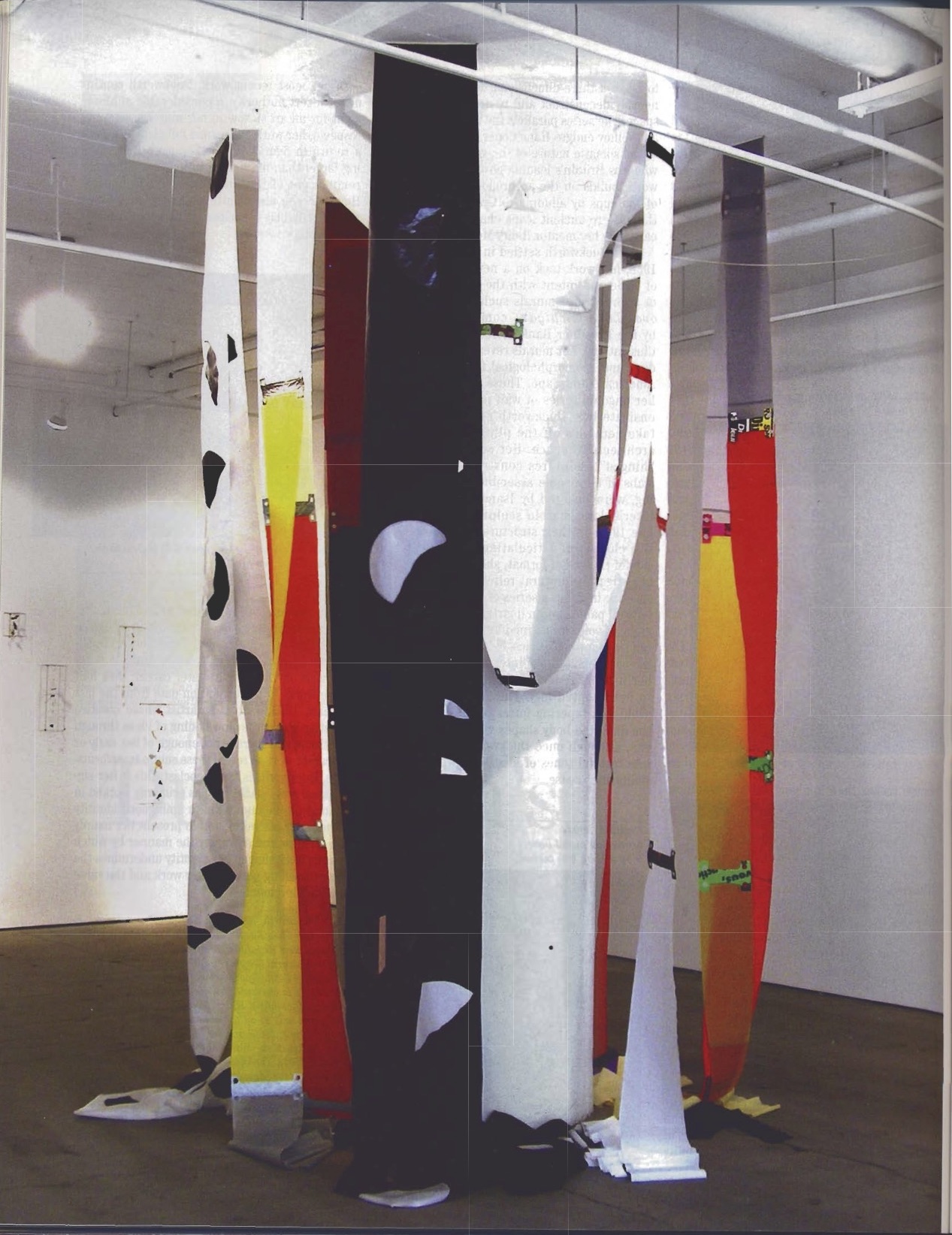
Page 2
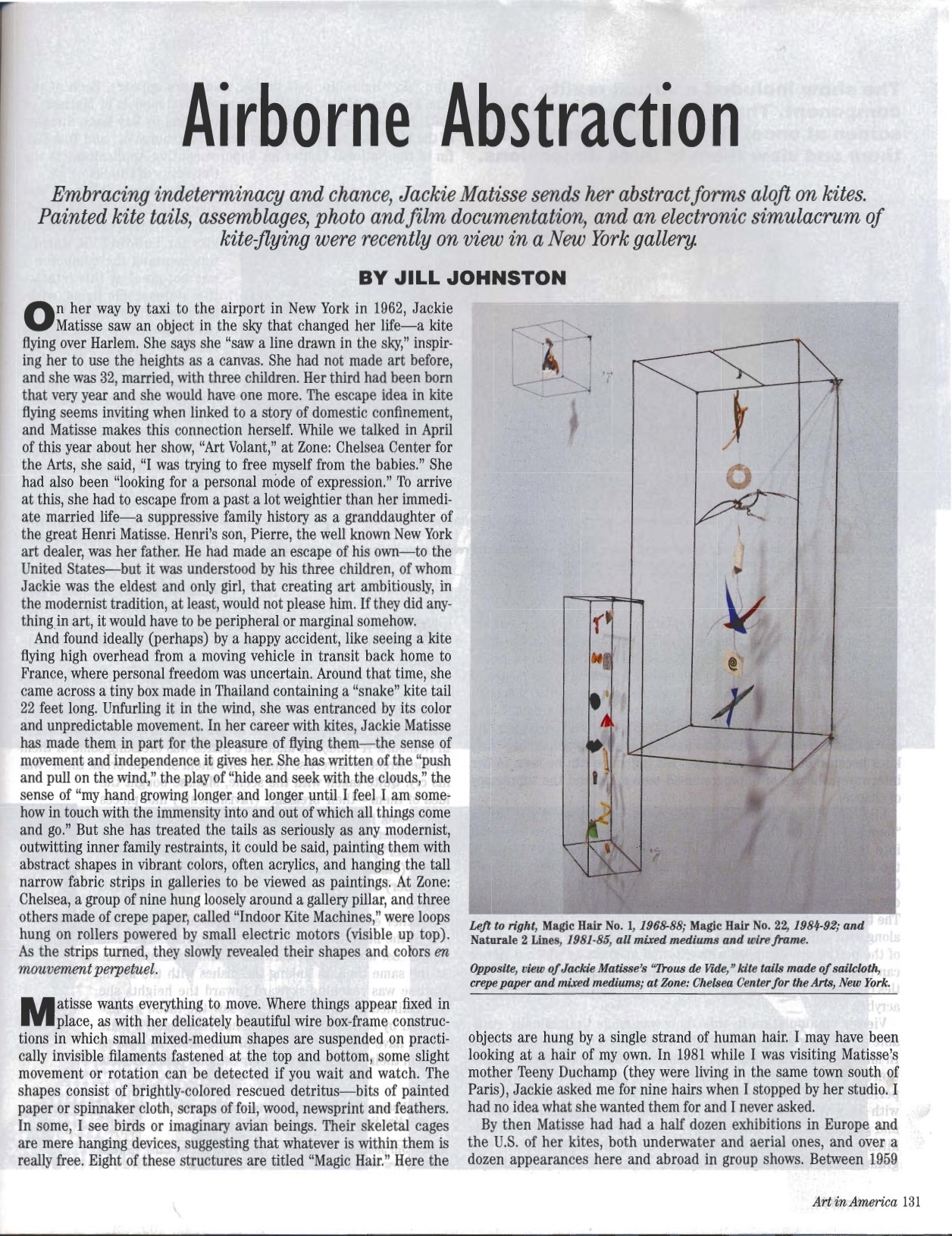
Page 3
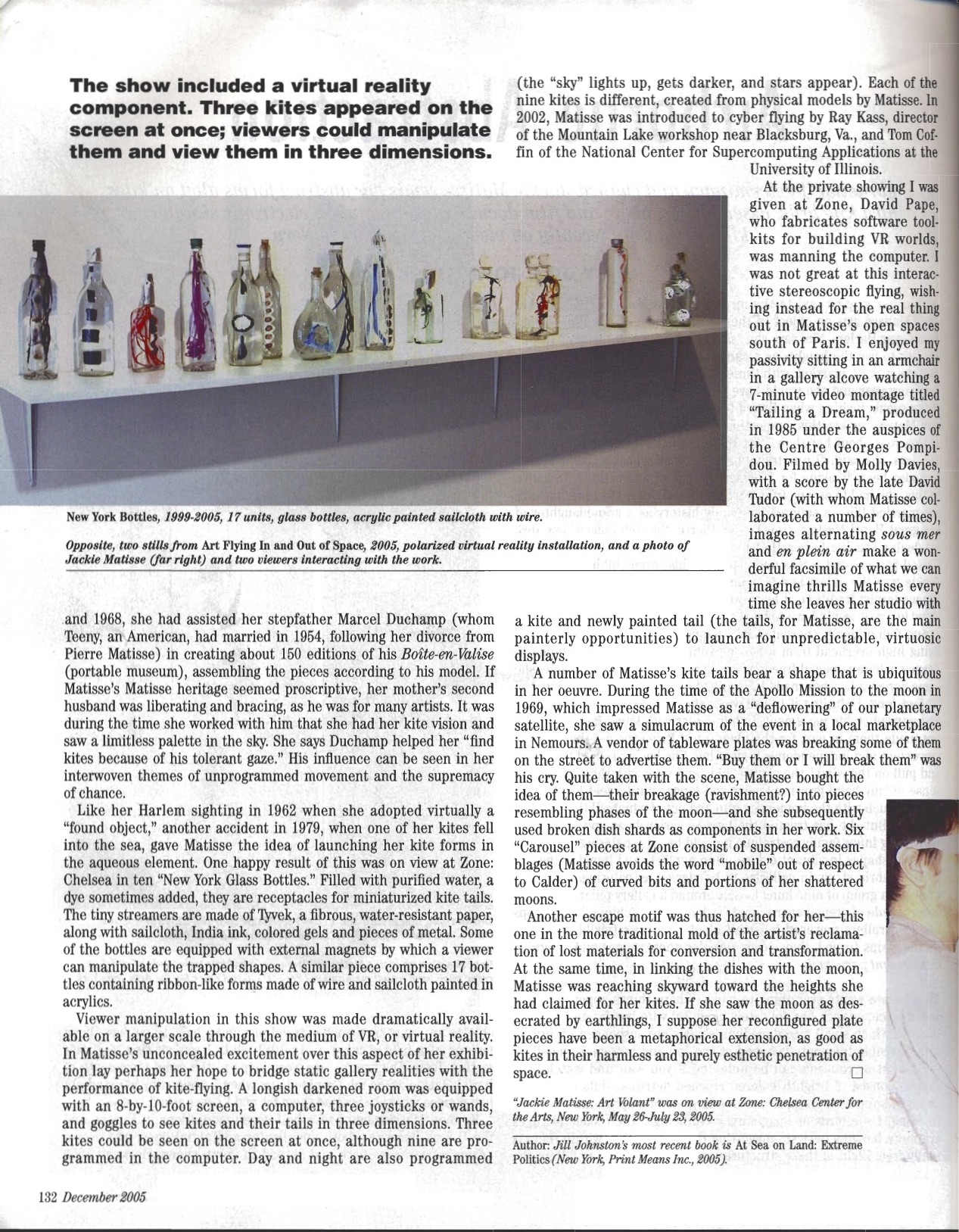
Page 4
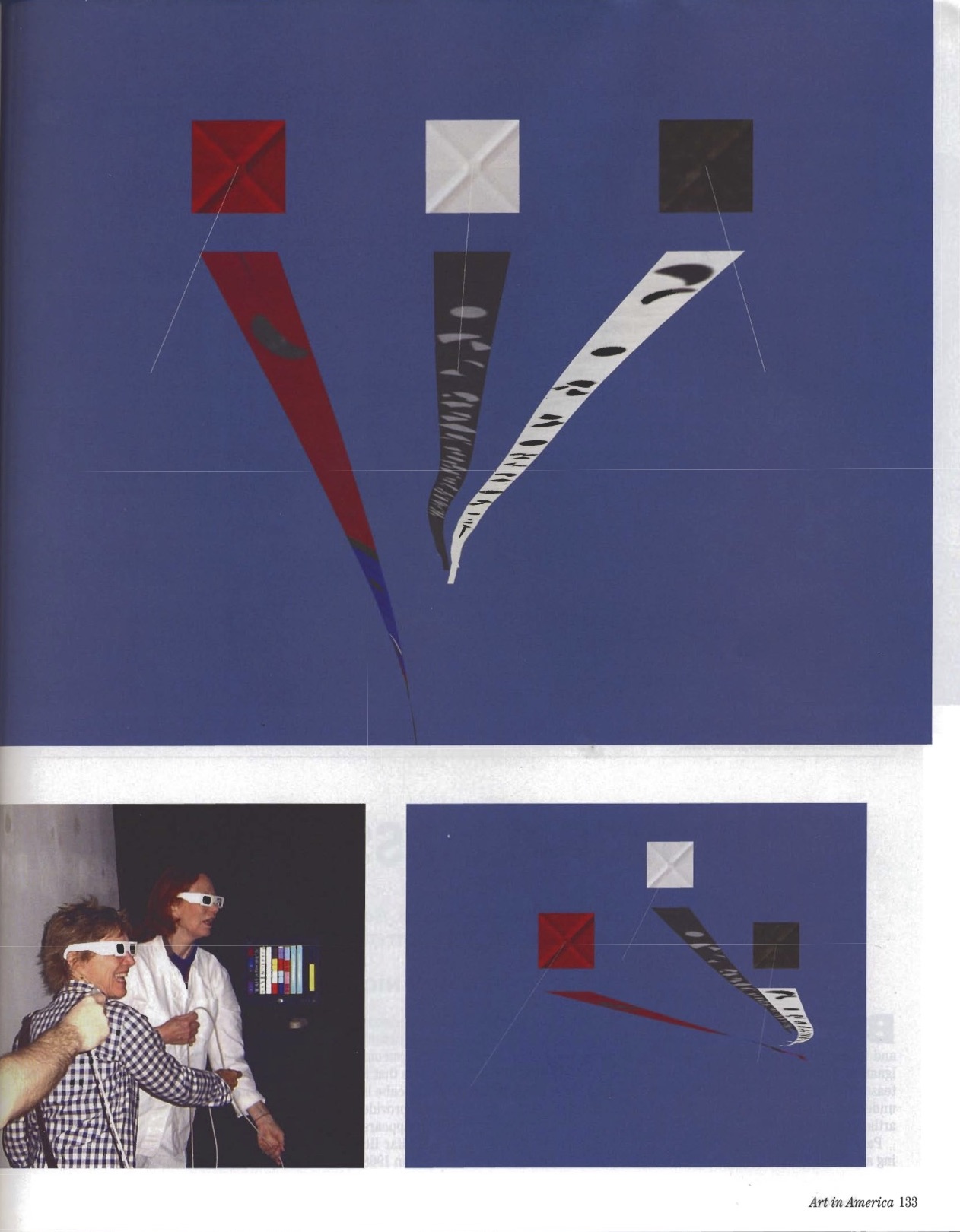
Page 5

“Airborne Abstraction”, ART IN AMERICA reviews Jackie Matisse’s exhibition

SCULPTURE MAGAZINE review on Jackie Matisse
Categories: news
Tags: Jackie Matisse
Manhattan Transfer: Dialogues with John Weber and Christopher Haun, Rainer Judd, Juan Puntes, Filippo Fossati, RC Baker
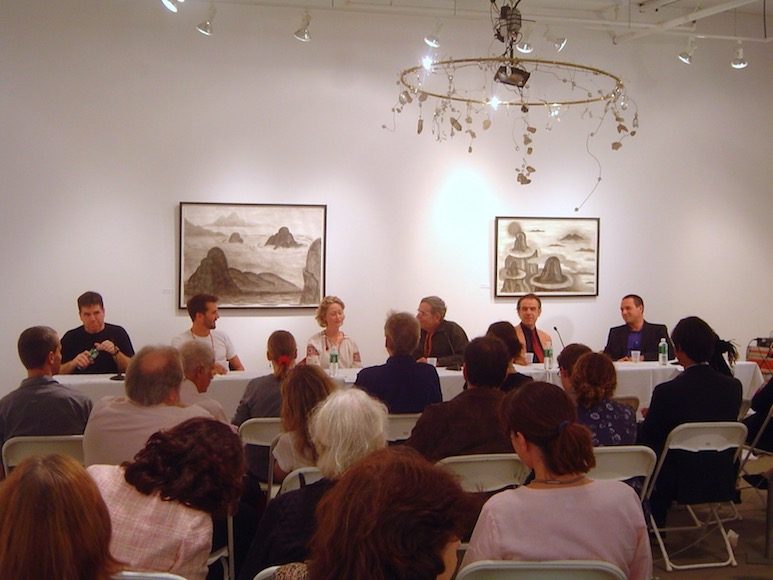

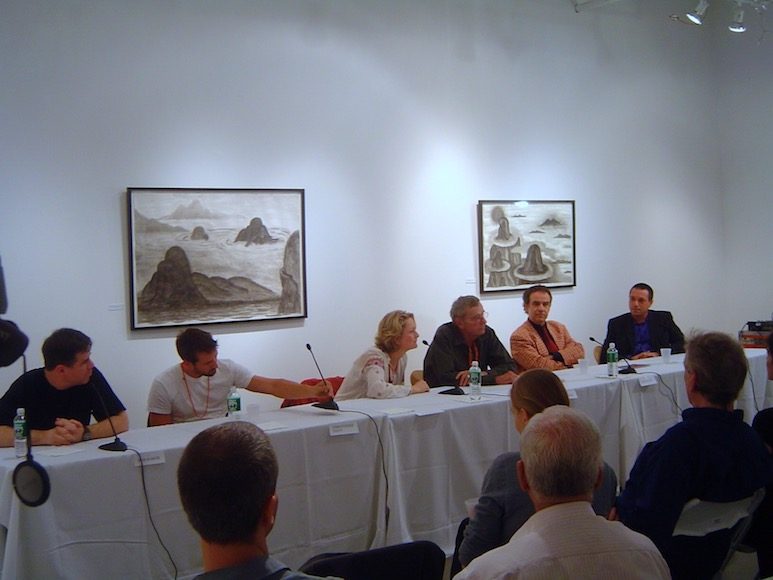

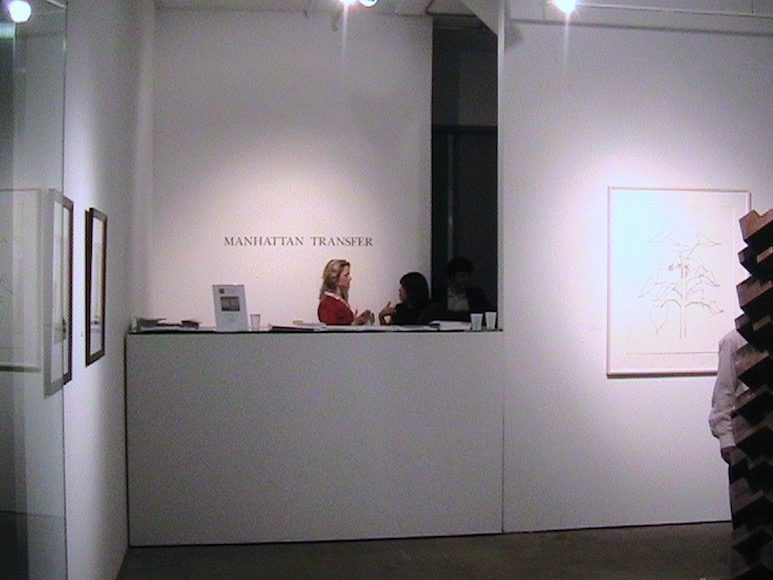
Accompanying the exhibition, Manhattan Transfer, ZONE:Chelsea Center for the Arts presents Dialogues with John Weber and Participating Panelists: A discussion on the benefits and disadvantages to artists relocating from New York City.
Panelists:
R.C. Baker of the Village Voice
Artist Christopher Haun
Artist Rainer Judd
“Manhattan Transfer” curator John Weber
Juan Puntes of White Box
Filippo Fossati of Esso Gallery
Thursday, May 4th, 2006
6:30pm
Categories: spotlight
Tags: John Weber
Brian Dailey at The Rachel M. Schlesinger Arts Center
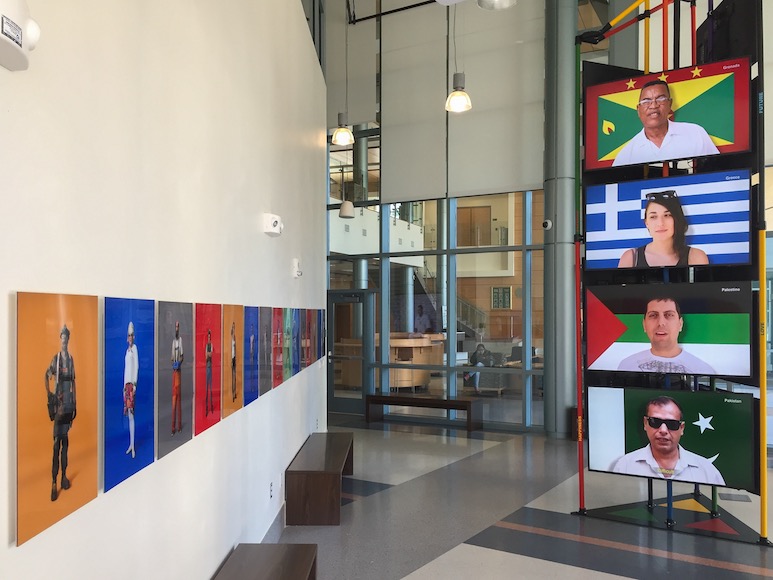
Brian Dailey’s works are shown at The Rachel M. Schlesinger Arts Center, January 11 – February 8, 2019. Opening reception 5-7pm, January 23. The exhibition is organized The Rachel M. Schlesinger Arts Center in collaboration with the Department of Photography and Media of the Alexandria Campus of NOVA.
January 11 – February 8, 2019

Brian Dailey at The Rachel M. Schlesinger Arts Center
Categories: news
Tags: Brian Dailey
Artist Talk with Brian Dailey Moderated by Wendy A. Grossman
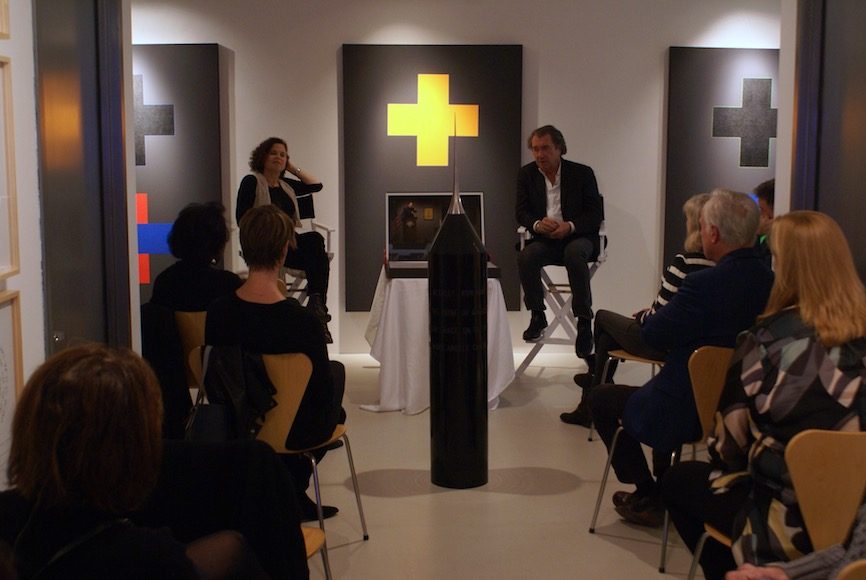
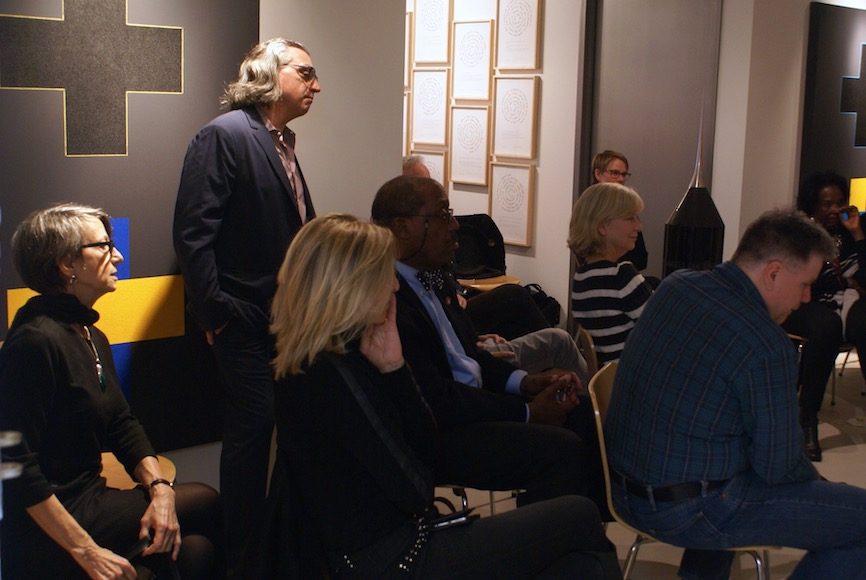
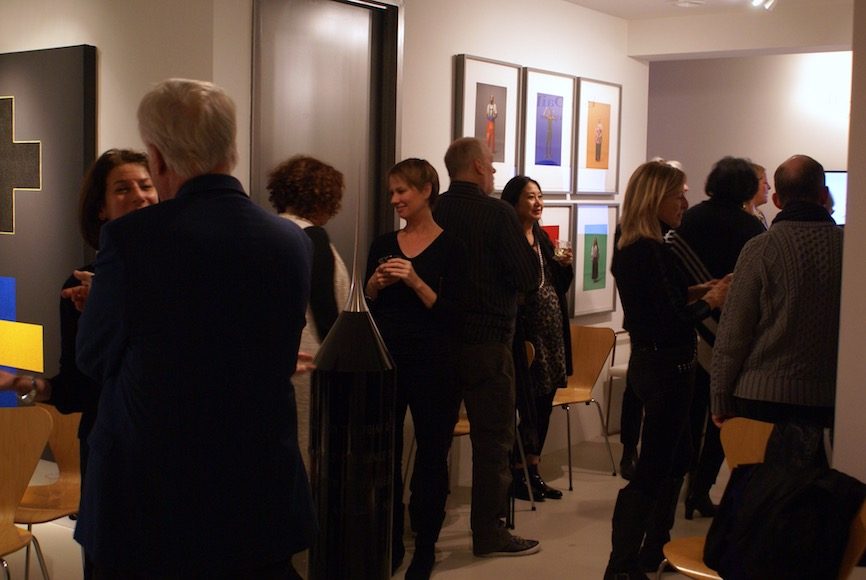
Brian Dailey
in conversation with
Wendy A. Grossman, Ph.D.,
Curatorial Associate, The Phillips Collection, Washington D.C.
ARTIST TALK: 6:30PM, Thursday, Nov 8th, 2018
Accompanying the exhibition Brian Dailey: Polytropos, artist Brian Dailey and curator Wendy A. Grossman discussed about Dailey’s works and his creative process.

Brian Dailey at The Rachel M. Schlesinger Arts Center
Categories: spotlight
Tags: Brian Dailey
MIRYANA TODOROVA
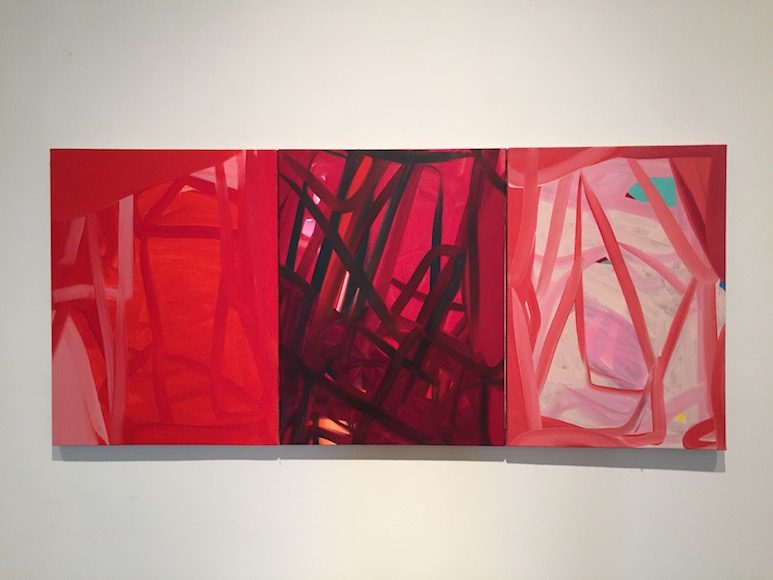
Foreign Body: Castles out of Sheds
2019
Oil on linen, triptych
34 x 76 in. (86 x 193 cm)

Foreign Body: Scream
2016
Oil on canvas
58 x 38 in. (147 x 97 cm)
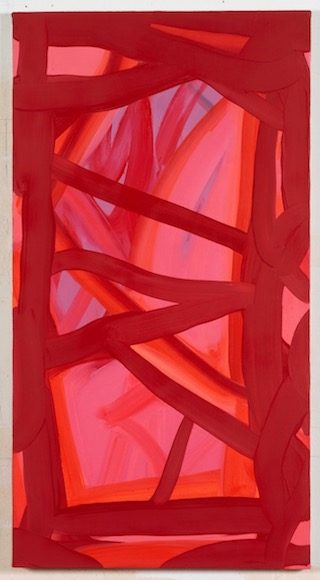
Foreign Body: Unstable Paradise
2018
Oil on linen
48 x 26 in. (122 x 66 cm)
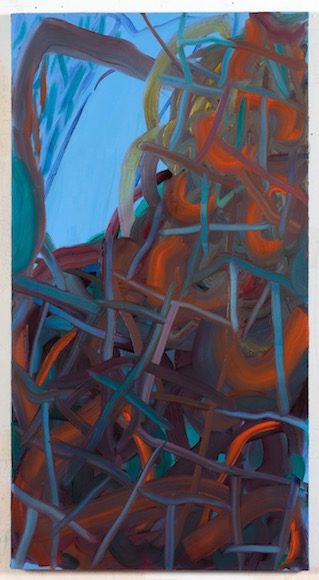
Foreign Body: Camp On A Pile of Shit
2018
Oil on linen
48 x 26 in. (122 x 66 cm)
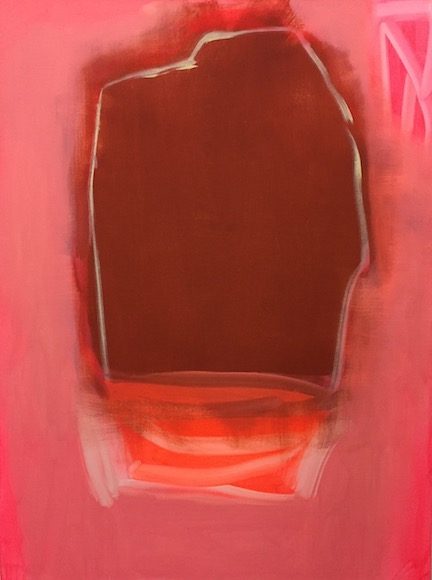
Embodied in Flesh
2018
Oil on linen
48 x 36 in. (122 x 91 cm)
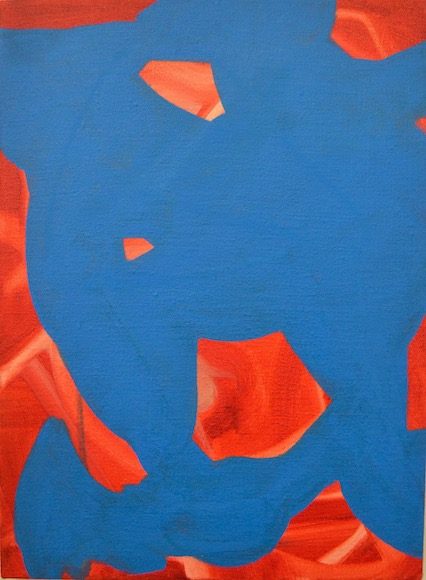
Foreign Body: Dance
2016
Oil on linen
24 x 18 in. (61 x 46 cm)
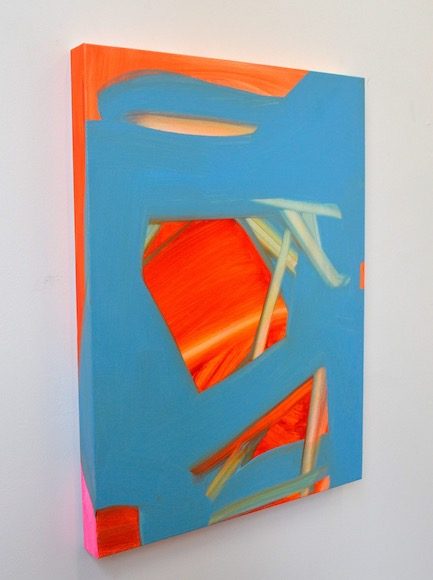
Foreign Body: Wrap Around
2016
Oil on canvas
24 x 18 in. (61 x 46 cm)

Foreign Body: Snake Chamber
2016
Oil on linen
24 x 18 in. (61 x 46 cm)
Miryana Todorova (b.1984 Sofia, Bulgaria) is a visual artist who lives and works between Sofia and NY. The major concern in her work is questioning the politics of public space and how people occupy it. Her projects combine painting, performance, video, movable architecture and public interventions. Miryana holds a MFA Fine Arts degree from the School of Visual Arts, NY. She has participated in numerous exhibitions in Europe and the US among which: Movables at frosch&portmann gallery, NY, Being at the Storefront for Art and Architecture, NY, Movement of the Whole at INDA gallery, Budapest, Disconsent at the Center for Contemporary Art- the Ancient Bath, Plovdiv, and dissident desire at DISTRICT Kunst- und Kulturförderung, Berlin. Miryana is the recipient of the Gaudenz B. Ruf Award for Young Artist (2011) and was a resident and fellow at the Skowhegan School of Painting & Sculpture (2012), ZK/U-Center for Art & Urbanistics (2013), District Berlin (2013), BRIC Visual Artist Residency (2014), and Eileen S. Kaminsky Family Foundation (ESKFF) at Mana Contemporary, NJ (2016). Ms. Todorova has been featured in publications such as Artforum, TimeOut New York, Blouin Artinfo, Le Monde Diplomatique, and Kultura.
My paintings propose ideas and ways of imagining movable architecture. Temporary structures in transit set up new ways of perception and geometry. With shifting grounds and no solidity, the work continuously involves movement and adaptation and every layer becomes a reaction to the transformation of a physical and spatial encounter.
Moving lands of uncertainty and precariousness emerge. Actions are open to improvisation and reconstruction. Gestures flow within open frames bouncing on and off of each other, going along each other, merging or falling apart. Clusters of adaptable architecture bump into actual barriers. Favelas, slopes and fluid corridors come close to the viewer and simultaneously create an obstructed perspective. The clash between depth and sculptural form, coming forward and layering onto one another, serves as a tool for engagement. Negotiation becomes the infrastructure. No arrangement is accidental. No order is fixed. Each bridge needs an extension. A hybrid structure, a moment of spontaneity or an ephemeral city shaped by vulnerability.
Foreign Body is a series of paintings based on the situations and contradictions between bodies and structures in transit. These works are about adaptations, not quite fitting but being considered fit, perceiving a structure and not being able to surpass and cross over on the other side of it while still attempting to reshape the body to adapt and fight with landscapes and structural powers of oppression and disregard.
The multiple layers within the paintings construct various viewpoints and cut outs- the feeling of being submerged and removed from the landscape at the same time. The canvas becomes the stage for performing vulnerability, separation, awkward encounters, obscured visibility and lack of clarity. The movable forms merge with dissident desire for resistance to demonstrate the constant fight with a world that moves forward too much on the basis of differences and conflicts rather than connectedness and collaboration.
(b.1984, Sofia, Bulgaria)
Education
2012 Skowhegan School of Painting and Sculpture School of Visual Arts, New York, MFA Fine Arts
2009 School of Visual Arts, New York, BFA Fine Arts
2007 Elisava Escola Superior de Disseny, Barcelona
Diploma in Design, Art and Society: Actions on Public Space
2006 Istituto Europeo di Design, Rome, BA Illustration and Animation
2004 Central Saint Martins, University of the Arts, London, Foundation Degree
Selected Exhibitions
2018 Recent Work: Foreign Bodies & Palaces of Sheds, Studio 510 – Artists Collective Exhibitions, Mana Contemporary, New Jersey, curated by Zeljka Himbele
2017 Places of Pleasure, Sofia City Art Gallery, Sofia, curated by Stefka Tsaneva
MIS, 184 Project Space, Brooklyn, New York, curated by Donna Cleary
Foreign Bodies, Roger Smith Hotel, New York, curated by Danika Druttman
Prototype:
In Motion, Societe Generale Expressbank, Sofia, curated by Studio Komplekt
2016 SVA x Skowhegan, SVA Chelsea Galleries, curated by Lauren Haynes
Toys And Other Things That Make You Cry, ICA- Institute of Contemporary Art, Sofia
Borderless: In Perspective, Lite- Haus Galerie, Berlin, curated by David C. Terry
2015 Process in Progress, Baeckerstrasse4 Gallery, Vienna, curated by Vessela Nozharova
Not Only To Believe In Magic But To Be A Proof of It, Variofocus, viennacontemporary fair, Vienna
Mature and Angry, 21th Week of Contemporary Art, Art Today Association Center for Contemporary Art- The Ancient Bath, Plovdiv, curated by Boris Kostadinov
Save The Dreams: Contempoary Bulgarian Artists In The Imago Mundi Collection, Fondazione Giorgio Cini, Venice, curated by Claudio Scorretti
A Travelling Satellite, DISTRICT Kunst- und Kulturförderung, Berlin
Satellite Affects And Other Lines of Flight, DISTRICT Kunst- und Kulturförderung, Berlin, curated by Susanne Husse and Andrea Keppler
Alt/Process/ Safe In My Frame, Achter de Boom Gallery, New York
Human-Nature, Salon 659, Brooklyn, New York
Attachment Theory, 184 Project Space, Brooklyn, New York
Gazellig, Achter de Boom Gallery, New York
Dissident Desire, Chapter 3, DISTRICT Kunst- und Kulturförderung, Berlin
Face to Place, New York Foundation for the Arts, Brooklyn, New York, curated by Felicity Hogan To The Heart of A Woman, Stephan Stoyanov Gallery, NY hosted by Arosita gallery, Sofia
2014 Movement of the Whole, INDA Galéria, Budapest, curated by Kamen Stoyanov
Disconsent, 20th Week of Contemporary Art, Art Today Association Center for Contemporary Art- The Ancient Bath, Plovdiv, curated by Iara Boubnova
Expanded Objects for Shared Living: Dream Station, Box Office, BRIC, Brooklyn, New York, curated by Jenny Gerow
There Is More Downstairs II, Stephan Stoyanov Gallery, New York, curated by Zeljk Himbele
2013 Being: Younger than Storefront, Expanded Objects for Shared Living, Storefront for Art and Architecture, New York, curated by Eva Franch i Gilabert and Carlos Mínguez Carrasco
Dissident Desire, Chapter 1: Exercises of Critical Body Building, DISTRICT Kunst- und Kulturförderung, Berlin, curated by Susanne Husse and Lorenzo Sandoval
Space Lab, 11th MitOst Festival, Leipzig, curated by Kristina Semenova and Olga Vostretsova Suspension, Artistdock, Postdamer Str 79, Berlin, curated by Arianna Plevisani and Serena Rota Footnotes, Node Center for Curatorial Studies, Berlin, curated by Patrícia Rosas
Archive of A Moving Body, ZK/U – Center for Art and Urbanistics, Berlin
Got Eyes, Encores! Musical Theater, New York City Center, New York, cuarted by Zeljka Blaksic
Subterranean Echoes, ZK/U – Center for Art and Urbanistics, Berlin
Urban Prothesis, ParaArtFormations, K67_Urban Router, Berlin, curated by Miodrag Kuc
239 Days, Allegra LaViola Gallery, New York, curated by Stephen Maine
2012 Movables, Frosch&Portmann Gallery, New York
Break/Step, Radiator Gallery, New York, curated by Eileen Jeng
Who Left What Behind, Art Gallery ‘Iliya Beshkov’, Pleven (Exchange Project: Contemporary Female Artists from Bulgaria and Turkey)
Time Geometry – Practices in Public Environment, Plovdiv History Museum, Plovdiv, curated by Bora Petkova and HR-Stamenov
Pulse, The Invisible Dog, Brooklyn, curated by Brian Whiteley and Pantelis Klonaris Object Not Found, Parlour No. 21, Venice, curated by Leslie Rosa
Every Once Sometimes Now, Visual Arts Gallery, New York, curated by Ron Segev
2011 Report 23, Museum Giuseppe Scalvini, Desio, curated by Cristiano Plicato
The Bulgarian Pavilion, Credo Bonum Gallery, Sofia, curated by Svetlana Kuyumdzhieva
The Proposal, General Consulate of Bulgaria, New York, curated by Stanislava Georgieva
Unlimited, Award for Contemporary Bulgarian Art Mtel, Benchmark Business Center, Sofia
You Can Have Your Void and Eat It Too, Two Moon Art House, New York
Temporary Status: Bulgarian Artists in America, Immigrant Movement International, New York, curated by Daniela Kostova
Shortlist 2011- nominated artists for Gaudenz B. Ruf Award, Rayko Aleksiev, Sofia, catalog Brutal Beauty, Para_SITE Gallery, Graz, curated by Stephan Wabl
Luoghi Diversi, Palazzo Terragni, Lissone, curated by Cristiano Plicato
Lumen: Video Art Festival, Staten Island, New York, curated by Ginger Shulick
NY Temporary: The City Through Film and Video, Center of Photography and the Moving Image, New York, curated by Liam Davis and H. P.Garcia
2010 Lost Horizon, ArtJail, New York, curated by David Gibson
MLAB Presents, Stephan Stoyanov Gallery, New York, curated by Natalia Mount
Dwelling-in-Travel, 16th Week of Contemporary Art, Plovdiv, organized by Art Today Association, curated by Katia Anguelova and Andrea Wiarda, catalog
Abstract Intentions, Westside Gallery, New York, curated by Keren Moscovitch SVA Alumni Selection, Palisades Park Public Library, New Jersey
2009 Learning Curve, Marian Spore, Industry City, New York, curated by Michael Connor OFB: The Flatbush Derby, Brooklyn College, New York
Avant-Guide to NYC: Discovering Absence, Apexart, New York, curarted by Sandra Skurvida Refashioning: Moda Мода, On Time Security Guard Training School, Bronx, New York,
curated by Hatuey Ramos Fermín
Peep-O-Rama, Chashama AK-57 Gallery, New York, curated by El Celso
Sum of Nothing, Lumenhouse, Bushwick, New York, curated by Sarah O’Donoghue
Making It/ Selections from the 2008 NYFA Mentoring Program for Immigrant Artists, 60 Wall Street Gallery/ Deutsche Bank, New York, curated by Liz Christensen, catalog
New Art/ New York, Visual Arts Gallery, New York, curated by Jeanne Siegel Process and Presence, SVA Main Gallery, New York, curated by Richard Brooks
2008 Prime Time, Westside Gallery, New York, curated by Suzanne Anker and Tom Huhn
Meetings, National Palace of Culture, Sofia
2007 View Finder, Westside Gallery, New York, curated by Jutta Koether
Crossing Boundaries in Public Space, CCCB- Centre de Cultura Contemporània, Barcelona Cakewalk, Metafora- Centre d’Estudis d’Art i Artteràpia, Barcelona
Naked in Your Socks, Metafora- Centre d’Estudis d’Art i Artteràpia, Barcelona
Awards, Honors and Fellowships
2013 District Kunst- und Kulturförderung, Berlin, Studio Grant ZK/U Berlin- Center for Art and Urbanistics, Fellowship
2011 Gaudenz B. Ruf Award, category Young Artist
2010 Charles G. Shaw Award, Brooklyn College, New York
Special Merit Award, MFA Fine Arts Department, School of Visual Arts, New York
2009 School of Visual Arts, New York, Travel Grant, ‘Art on Art’ Workshop, Venice Biennial
2006 Apriti IED, Rome, Merit Award Best Short Film, ‘Metapostermorfosi’
2004 Central Saint Martins College of Art, London, Chairman’s Merit Award
Residencies
2016 MANA BSMT Residency, Mana Contemporary, New Jersey, curated by Z Behl ESKFF: Eileen S. Kaminsky Family Foundation Residency
2014 BRIC Visual Artist Residency
2008 School of Visual Arts, New York, Public Art Residency
2007 Metafora- Centre d’Estudis d’Art i Artteràpia, Barcelona, International One-Year Residency 2006 International Summer Academy, Salzburg, Residency program
2005 School of Visual Arts, New York, Painting and Mixed Media Summer Residency
Categories: artists
Tags: Miryana Todorova
DONALD JUDD
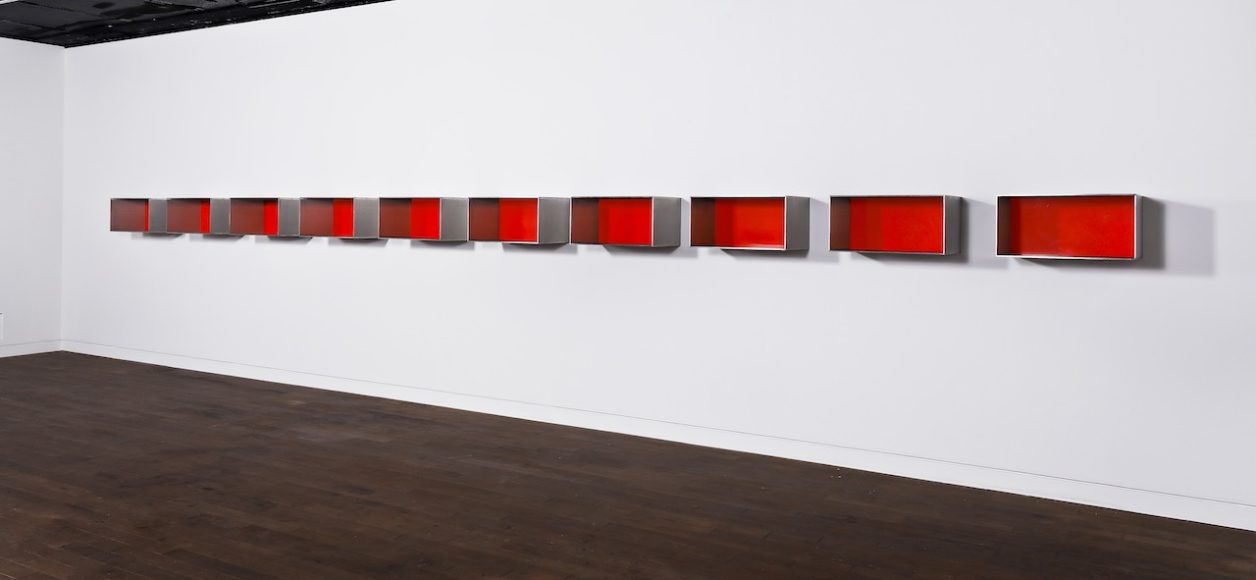
Donald Judd
Untitled (74-20 Bernstein) 1974
Stainless steel units with red enamel painted backs
Ten units; each 12 x 24 x 14 in. (30.5 x 61 x 35.9 cm.)
Categories: artists


